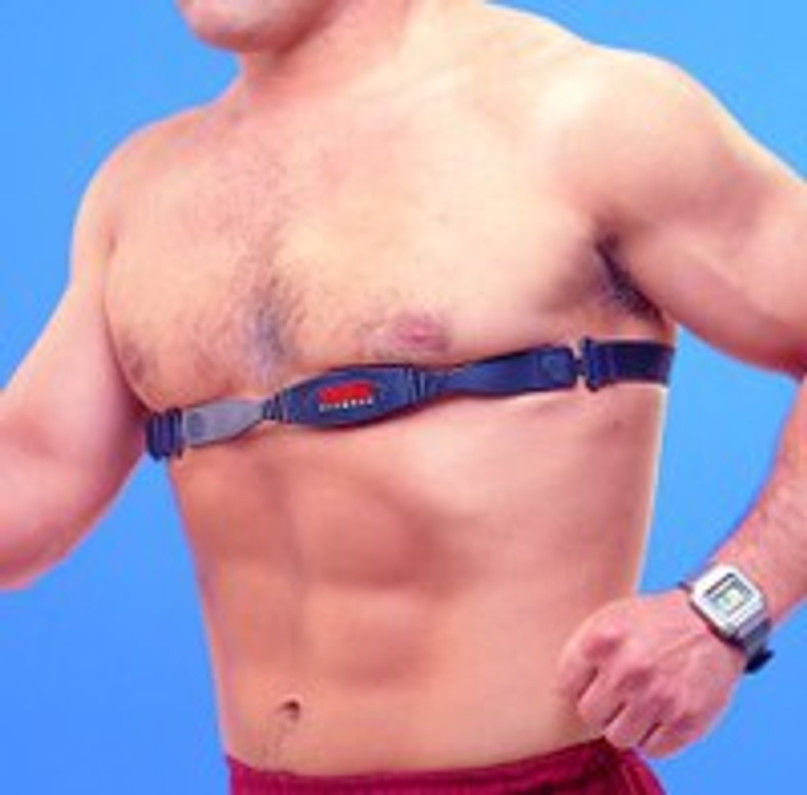Wireless Heart-Rate Troubleshooting for Fitness Equipment
We often get asked about issues with consoles on fitness equipment not receiving the signal from your chest strap.
Here's how to troubleshoot Heart Rate Signal Reception...
Preamble
Before I get started, this article applies as follows;
Many pieces of fitness equipment come with a heart-rate receiver built into the console. That is, when you wear a chest strap, the strap senses your heart rate and sends the signal out using a standard frequency. The console on your bike/treadmill will receive this signal, and display your heart-rate as you exercise.
What to Check
- Moisten your chest! This is the most important tip. How the chest strap works is that it senses the electrical pulse from your heart each time it beats. Electricity conducts through liquid. Before you exercise, your skin can be dry, so the signal will not pass through your skin to the sensors on the underside of the chest strap. Overcome this by rubbing a small amount of water into the area between the chest strap and your skin (all the way from the left to the right of your rib cage).
- Is the transmitter belt worn correctly? The belt should be flat against the skin, with the logo right side up.
- Be patient. It can take quite a few seconds to connect from strap to console, especially if not moist. Try exercising for a while and see if the heart-rate appears after 30 seconds or so.
- Is your strap compatible? If the strap came with the bike/treadmill, ignore this point, but if you're matching a strap you bought separately, or that came with a heart-rate monitor, make sure it uses the old analog signal. Some higher-end chest straps use digital (coded) signals only, which your equipment cannot detect.
- Distance. Just initially, try moving your chest closer to the console. Once the signal connects, you can move back to a comfortable exercise distance.
- Interference? Try moving your equipment away from any potential interference such as other heart-rate monitors, home phones, TVs, etc.
- Isolate the problem. If you have access to another heart-rate monitor (eg. a watch and strap from a friend) this is a great way to find out if the problem is with the transmitter (your chest strap) or the receiver (the console on the equipment). Try another compatible chest strap which you know to be working. If the console picks up that one, but not your own chest strap, you can try to fix your chest strap (eg. flat battery, faulty strap). If the console won't pick up either your strap or another strap, it could be a console issue.
Flip it around - try to connect your chest strap to a watch (eg. Polar or Suunto which should receive your strap's signal too - or another piece of fitness equipment at a friend's house). If you can connect your chest strap to another piece of equipment or watch, then it proves your strap is fine. - Call the help-desk. Each manufacturer has an Australian help-desk. Try calling them to trouble-shoot over the phone. They can usually guide you through how to resolve it, and if it's an equipment problem within warranty period, they can also progress a replacement part or technician for you.
6th Nov 2015
Recent Posts
-
FTMS Bluetooth Apps on Fitness Equipment
Many pieces of fitness equipment, like exercise bikes, treadmills and rowing machines, come with …21st Aug 2024 -
Fitonline Wins National Retail Award 2019
We're so proud to announce Fitonline's group company has been announced as 2019 "Medium Retailer of …18th Sep 2019 -
Health Hacker and Fitonline
FitOnline is proud to expand its involvement with the Australian podcast community, with a 2019 s …10th Mar 2019




